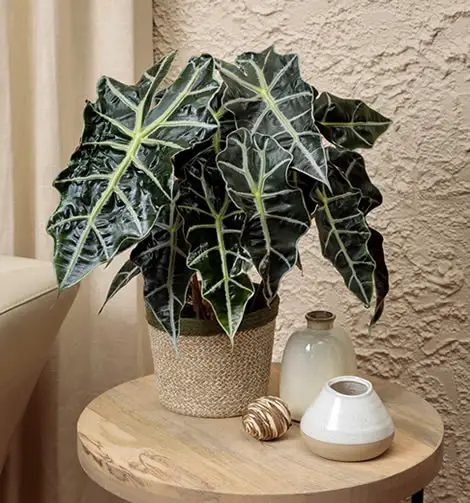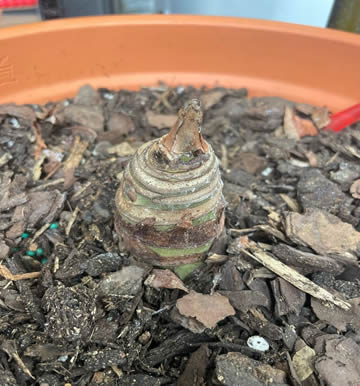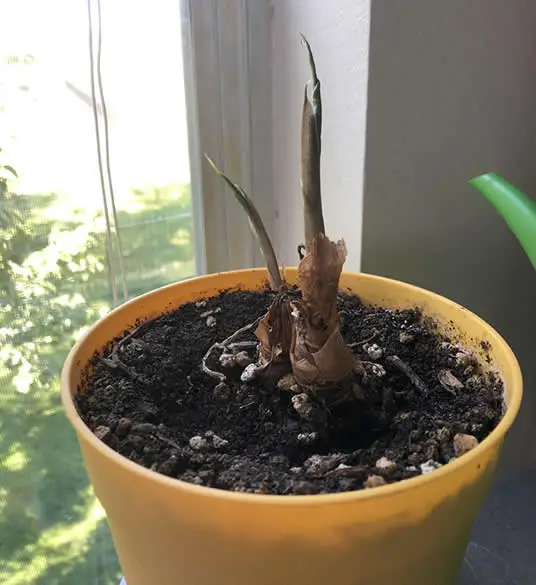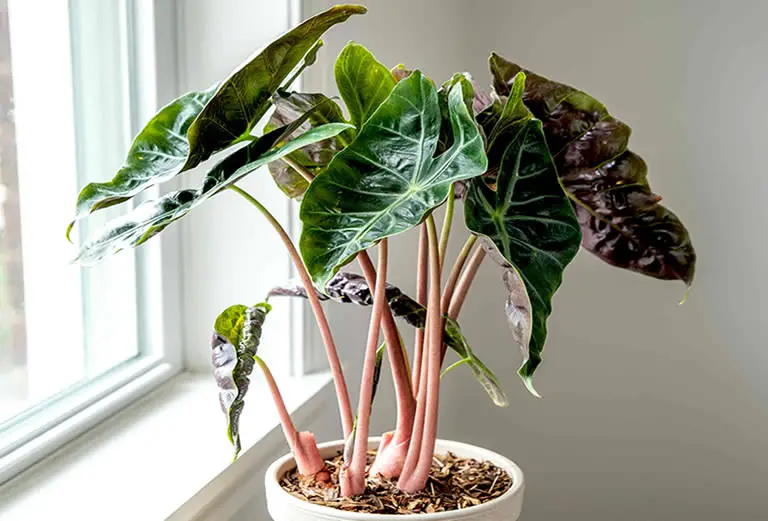If you’ve ever watched your Alocasia go from bold and beautiful to droopy and leafless, it can feel a bit like plant heartbreak. But before you rush to toss it out, know this: your Alocasia might not be dying—it could just be resting.
Dormancy is a natural part of an Alocasia’s life cycle.
It may look dramatic (and yes, a bit alarming), but it’s actually a healthy pause the plant takes when conditions aren’t quite right for growth.
Here’s everything you need to know about why it happens, what to expect, and how to care for your Alocasia through dormancy.
Table of Contents
- What Dormancy Means for Alocasia Plants
- How to Tell If Your Alocasia Is Going Dormant
- Don’t Panic: How to Know If It’s Dormant or Dead
- How to Care for a Dormant Alocasia
- Should You Cut Back Dormant Leaves?
- Helping Your Alocasia Wake Up From Dormancy
- Can You Prevent Dormancy in Alocasia?
- When You Might Want to Induce Dormancy On Purpose
- Final Thoughts: Dormancy Isn’t the End—It’s a Pause
What Dormancy Means for Alocasia Plants
Dormancy is a state where the plant stops producing new growth and slows its internal processes.
For Alocasias, that can mean leaf loss, reduced water intake, and a pause in visible activity—but under the surface, the roots are still quietly working.

This phase is triggered by environmental changes such as:
-
Shorter days and lower light levels
-
Cooler temperatures, especially below 60°F (15°C)
-
Lower humidity
-
Drier soil conditions
In nature, dormancy helps the plant conserve energy when resources are scarce.
Indoors, your Alocasia may not always enter full dormancy if you maintain warm, well-lit, humid conditions. But even indoors, some slowdown is normal during fall and winter.
How to Tell If Your Alocasia Is Going Dormant
Not all Alocasias experience dormancy the same way.
Some stop growing but keep their leaves.
Others will completely die back to the soil, leaving only a tuber behind.
Common signs of dormancy include:
-
Leaves drooping and turning dull or yellow
-
Slower or completely halted growth
-
Leaves dying off one by one
-
Bare stems or even no foliage at all
In some cases, the plant’s response depends on where it’s placed.
A warm room with plenty of light may only trigger partial dormancy, while a windowsill with fluctuating temps and dry air could cause a complete dieback.
Don’t Panic: How to Know If It’s Dormant or Dead
This is where many plant owners make a big mistake—assuming the plant is dead when it’s just sleeping.

To delay or prevent dormancy:
To check:
-
Gently unpot the plant and inspect the roots
-
If the roots are firm and the tuber smells clean or earthy, it’s alive
-
Rotten roots will smell bad, feel mushy, or crumble easily
If the roots and tuber are healthy, the plant is simply dormant. With the right care, it will grow back when it’s ready.
How to Care for a Dormant Alocasia
Once you’ve confirmed dormancy, it’s time to adjust your care routine.
Dormant Alocasias require far less attention than actively growing ones—but they still need a little support.
Here’s how to care for your plant while it rests:
-
Reduce watering – Only water when the soil is mostly dry. Think of it like giving the roots a small sip every 2–3 weeks.
-
Avoid bright, direct light – Too much light can stress a resting plant. Filtered or low light is fine during this phase.
-
Keep temperatures cool but not cold – Aim for around 60–70°F (15–21°C). Avoid hot appliances, drafts, or heaters.
-
Watch for pests – Dormant plants are vulnerable. Check for spider mites or other pests and treat gently if needed.
If your plant has no leaves at all, focus on keeping the tuber slightly moist—not wet or bone dry.
The soil should feel just barely damp when touched.
Should You Cut Back Dormant Leaves?
If your Alocasia still has faded or drooping leaves, your instinct might be to snip them off—but hold off if you can.
Here’s why:
-
The plant may still be pulling nutrients from the fading leaves
-
Those leaves might perk back up when dormancy ends
-
Removing them prematurely can interrupt the plant’s natural process
If a leaf is clearly dead or mushy, go ahead and trim it. Otherwise, wait until the plant starts producing new growth.
Helping Your Alocasia Wake Up From Dormancy
You don’t need to do much to bring your Alocasia out of dormancy—just create the right conditions and let nature take over.

To encourage new growth:
-
Move the plant to a warm, bright location with indirect light
-
Start watering a bit more regularly as the soil begins to dry out
-
Increase humidity with a humidifier or pebble tray
-
Ensure the soil stays above 70°F (21°C); consider using a heat mat
Avoid fertilizing until you see active growth. Once new leaves appear, slowly resume your normal care routine.
Can You Prevent Dormancy in Alocasia?
If you’d prefer your Alocasia to stay leafy and lush year-round, it is possible to prevent dormancy—especially indoors.
The trick is to avoid the environmental cues that tell the plant to slow down.
-
Maintain indoor temps above 70°F (21°C)
-
Use a grow light to supplement shorter daylight hours
-
Keep humidity levels above 60%
-
Avoid letting the soil get too dry for too long
-
Fertilize lightly if the plant is still producing new growth
That said, some Alocasias will still slow down in winter no matter what.
The goal is to avoid full dieback and keep the plant semi-active until spring returns.
When You Might Want to Induce Dormancy On Purpose
In certain situations, encouraging your Alocasia to go dormant can be helpful.
Maybe you’re dealing with pests, going away for an extended period, or simply want to store the plant more easily over winter.
To induce dormancy:
-
Gradually reduce light exposure
-
Lower the room temperature slightly
-
Decrease watering but don’t let the soil dry out completely
It’s best to do this after the growing season ends and the plant is already showing signs of slowing down.
Final Thoughts: Dormancy Isn’t the End—It’s a Pause
Watching your Alocasia lose its leaves can feel discouraging, but dormancy is just part of the plant’s natural rhythm.
With a little patience and the right care, your plant will bounce back—often stronger than before.
Whether your goal is to ride out dormancy or prevent it altogether, understanding the signs and knowing how to respond gives you the confidence to handle this phase with ease.
When the conditions are right, your Alocasia will awaken, ready to stretch out its leaves and thrive once again.
You may be interested in these other articles about Alocasia care:
Alocasia Plant Care: Indoor & Outdoor Care Guide
Alocasia Water Guide. Watering Alocasia & Growing Alocasia In Water
How to Keep Your Alocasia Wentii Thriving: Complete Care Guide
Alocasia Dragon Scale Care Guide: How to Keep This Jewel Alocasia Thriving
Why Are My Alocasia Leaves Turning Yellow? Causes, Fixes, and What to Do Next
Why Is My Alocasia Drooping? Common Causes and How to Revive It

